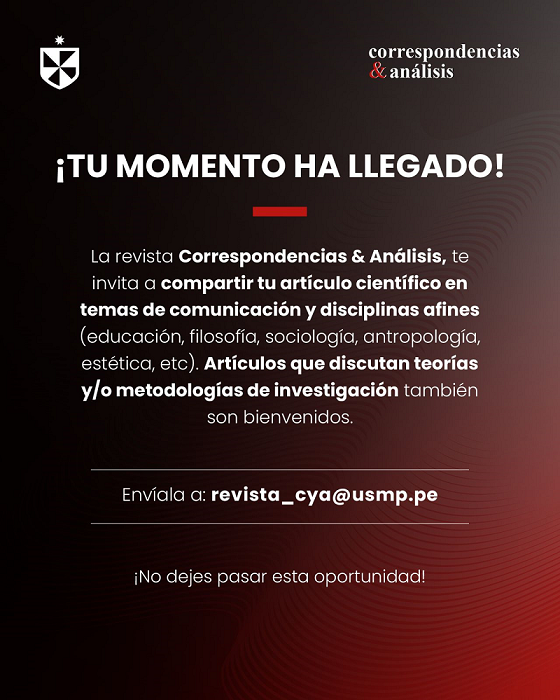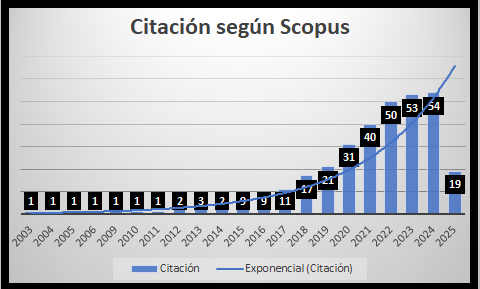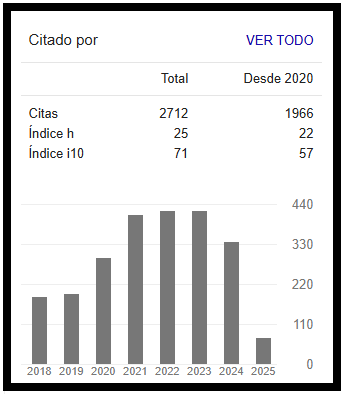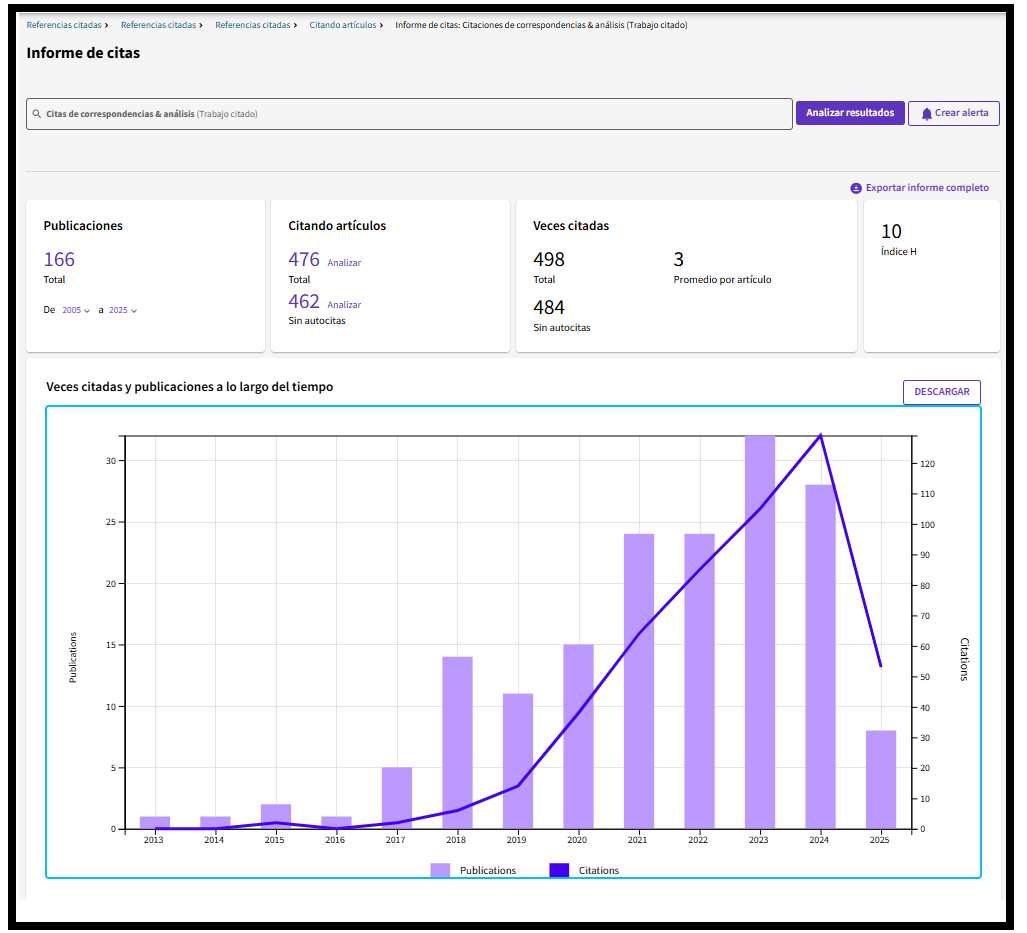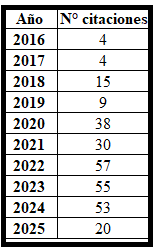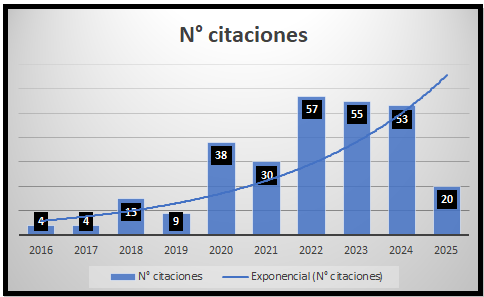Trivialising humour and naturalising stereotyping: The impact ofmemes on narratives of xenophobia, machismo, and narcoculture
DOI:
https://doi.org/10.24265/cian.2025.n21.01Keywords:
memes, humour, migration, narcos, feminism, social networks, stereotypeAbstract
Nowadays, the digital revolution has positioned the meme as a manifestation of humour that constructs and reflects worldviews that inhabit the collective imaginaries of the communities that share and viralise them. In this sense, the present study aims to analyse 300 memes obtained from the algorithmic operations of Google Images around three specific themes: xenophobia, sexism (machismo), and narcoculture. A
method based on the coding of memetic narratives was employed, which enabled us to break down the form and message of each piece of communication in terms of its structure, intertextuality, intention, the rhetoric of humour, narrative, and main character. The results indicate that memes, within their textual and visual nature, are used both to ridicule or reinforce stereotypes but can also serve to denounce complex social issues within the selected contexts. The discussion questions the role of institutions and digital platforms in regulating discourses that circulate through memes, especially when they reinforce problematic narratives or promote discrimination. The research underlines the need to move towards processes of memetic literacies, which avoid underestimating the role of these communicative
pieces that, mimetised in humour, can reproduce identities prone to discourses of hate, exclusion, and apology for illegality.
Metrics
Downloads
References
Alonso-Ferreiro, A., & Gewerc, A. (2018). Alfabetización mediática en la escuela primaria. Estudio de caso en Galicia. Revista Complutense de Educación, 29(2), 407-422. https://doi.org/10.5209/RCED.52698
Amossy, R., & Pierrot, A. H. (2020). Estereotipos y clichés. Eudeba.
Andrade, L. (2014). Meme de macho: humor masculista, estereótipo e cenografia. PalimpsestoRevista do Programa de Pós-Graduação em Letras da UERJ, 13(19), 353-366. https://www.e-publicacoes.uerj.br/palimpsesto/article/view/34934
Antón, A. del P. (2020). Los memes: comunicación y cultura política para una ciudadanía digital centennials. Revista Conrado, 16(75), 159-167.
Arailopoulos, V., Koutlis, C., Papadopoulos, S., & Petrantonakis, P. (2024). PolyMeme: FineGrained internet meme sensing. Sensors, 24(17), 5456. https://doi.org/10.3390/s24175456
Aranda, F. J. (2024). Memes as symbols of hate speech: The influence of graphic humour on freedom of expression and politics. VISUAL REVIEW. International Visual Culture Review Revista Internacional De Cultura Visual, 16(2), 241-253. https://doi.org/10.62161/revvisual.v16.5222
Arteaga-Barba, M., Escamilla, K. G. L., Sánchez, K. M., León, J. R. P., Guzmán-Díaz, G., & Herrera, J. C. (2021). Aproximación socio-histórica y psicoanalítica del machismo y sexismo. Boletín científico de la escuela superior Atotonilco de tula, 8(15), 45-50. https://doi.org/10.29057/esat.v8i15.6305
Barandica, M. (2020). Migrantes venezolanos en Colombia, entre la xenofobia y aporofobia; una aproximación al reforzamiento mediático del mensaje de exclusión”. Latitude, 2(13), 119-128. https://doi.org/10.55946/latitude.v2i13.100
Bárcenas, K. (2023). Mitologías feministas y de la disidencia sexual: deformar sentidos y despolitizar por medio del humor. Comunicación y sociedad. https://doi.org/10.32870/cys.v2023.8452
Benjumea, C. (2015). La calidad de la investigación cualitativa: de evaluarla a lograrla. Texto & Contexto-Enfermagem, 24, 883-890. https://doi.org/10.1590/0104-070720150001150015
Bolívar, A., & Fontaines-Ruiz, T. (2021). El meme como replicador de la xenofobia. Una perspectiva interaccional y crítica. Revista da ABRALIN, 51-77. https://revista.abralin.org/index.php/abralin/article/view/1987
Castiblanco, A. F., & Wilches, J. A. (2022). El meme como ágora digital del lenguaje político contemporáneo. El caso del movimiento 21N y 11S en Colombia. Bitácora Urbano Territorial, 32(III), 123-136. https://doi.org/10.15446/bitacora.v32n3.102368
Chagas, V., & Da-Costa, G. (2023). «WhatsApp and transparency: an analysis on the effects of digital platforms’ opacity in political communication research agendas in Brazil». Profesional de la información, 32(2). https://doi.org/10.3145/epi.2023.mar.23
Chaparro, L., & Alfonso, H. (2020). Impactos de la COVID-19 en la violencia contra las mujeres. El caso de Bogotá (Colombia). Nova, 18(35), 115-119. https://doi.org/10.22490/24629448.4195
Cicua, A. C., & Calderón, P. F. (2023). Los memes dentro de las luchas de violencia de género: limitantes del humor y la reflexión. Punto de vista, 14(21), 81-98. https://doi.org/10.15765/pdv.v14i21.4050
Collado-Campos, A. N. (2023). Capítulo 5. Polifonías de la memesfera feminista: entre el carnaval, la tecnopolítica y la contrahegemonía. Fanpages de feminismo geek en Facebook. Espejo de Monografías de Comunicación Social, (16), 127-156. https://doi.org/10.52495/c5.emcs.16.cyg1
Cover, R. (2022). Digital hostility, subjectivity and ethics: theorising the disruption of identity in instances of mass online abuse and hate speech. Convergence, 29(2), 308-321. https://doi.org/10.1177/13548565221122908
Cuichán-Arias, A., & Plaza-Trujillo, E. (2020). Memes, interfaces y acto comunicativo. En N. Medranda-Morales & N. Valbuena-Bedoya (coords), Comunicación y ciudad: lenguajes, actores y relatos (pp. 163-179). Editorial Abya-Yala.
Dawkins, R. (1990). El gen egoísta. Editoria Bruño.
Drakett, J., Rickett, B., Day, K., & Milnes, K. (2018). Old jokes, new media - Online sexism and constructions of gender in Internet memes. Feminism & Psychology, 28(1), 109127. https://doi.org/10.1177/0959353517727560
El Tiempo. (2021, 2 de agosto). Los errores de producción cometidos en ‘Pablo Escobar: el patrón del mal’. El Tiempo. https://www.eltiempo.com/cultura/gente/pablo-escobarerrores-de-produccion-en-el-patron-del-mal-607725
Europapress. (2016, 9 de junio). ‘100 años de soledad’ en memes, la tarea de una profesora chilena. https://acortar.link/YVKnHL
Ferreira, A. (2023). Cancel culture and its effects onfreedom of speech: an analysis with a focus on the entertainment industry [Tesis de Maestría]. Instituto Superior de Contabilidade e Administração do Porto. http://hdl.handle.net/10400.22/24631
Fidler, R. (1997). Mediamorphosis: Understanding new media. SAGE Publications.
Fraticelli, D. (2022). Los Memes en pandemia: una discusión sobre sus modos de estudio. Anais de Resumos Expandidos do Seminário Internacional de Pesquisas em Midiatização e Processos Sociais, 1(5). https://acortar.link/lRhiZd
Gagnier, C. M. (2011). On privacy: liberty in the digital revolution. J. High Tech. L., 11, 229.
García-González, L. A., & Bailey-Guedes, O. B. (2020). Memes de Internet y violencia de género a partir de la protesta feminista #UnVioladorEnTuCamino. Virtualis, 11(21), 109-136.
Gillingham, P., & Smith, B. (Eds.). (2014). Dictablanda: Politics, work, and culture in Mexico, 1938-1968. Duke University Press.
Grimson, A. (2020). Los límites de la cultura: crítica de las teorías de la identidad. Siglo XXI Editores.
Hermida, P., & Santos, E. (2023). Detecting hate speech in memes: a review. Artificial Intelligence Review, 56(11), 12833-12851. https://doi.org/10.1007/s10462-023-10459-7
Hernández, M. (2020). Ni michismi ni fiminismi, la influencia de los memes y la remezcla en el discurso contrahegemónico de los feminismos en el 8M. En F. Sierra Caballero, D. Montero Sánchez, & J. Candón-Mena, (coords.), Ciberactivismo, libertad y Derechos Humanos. Retos de la democracia informativa. XI Congreso Internacional ULEPICC (pp. 185-208). ULEPICC.
Hernández, M., Sola-Morales, S., & Benítez-Eyzaguirre, L. (2022). Humor contra las violencias: Los memes como estrategia de los feminismos. En G. A. Corona-León, & J. S.d. Oliveira (Eds.), La transversalidad de la investigación en comunicación (pp. 773-798). Dykinson S. L.
Humaini, & Satyo, N. (2024). Meme symbolization in new media as a representation of political communication in The Digital Space. JILPR - Journal Indonesia Law and Policy Review, 5(2), 367-376. https://doi.org/10.56371/jirpl.v5i2.223
Infobae. (2023, 9 de marzo). La razón por la que es incorrecto usar el término feminazi. https://www.infobae.com/mexico/2023/03/09/la-razon-por-la-que-es-incorrecto-usar-eltermino-feminazi/
Jenkins, E. (2014). The modes of visual rhetoric: Circulating memes as expressions. Quarterly Journal of Speech, 100(4), 442-466. https://doi.org/10.1080/00335630.2014.989258
Jian, J., Chen, S., Luo, X., Lee, T., & Yu, X. (2020). Organized cyber-racketeering: exploring the role of internet technology in organized cybercrime syndicates using a grounded theory approach. Transactions on Engineering Management, 69(6), 3726-3738. https://doi.org/10.1109/tem.2020.3002784
Jiménez-Sánchez, Á., Vayas-Ruiz, E., Amancha, C., & Endara, F. (2021). Google imágenes, profesiones, género y sexualidad. GIGAPP Estudios Working Papers, 8(204), 207-223. https://acortar.link/CmMSZ6
Johnson, D. (2007). Mapping the meme: a geographical approach to materialist rhetorical criticism. Communication and Critical/Cultural Studies, 4(1), 27-50. https://doi.org/10.1080/14791420601138286
Juárez, K. (2022). El meme digital como herramienta política en México. Cuicuilco revista de Ciencias Antropológicas, 85, 215-238.
León, A., & Villaplana-Ruiz, V. (2022). Transfeminidad viral en la cultura red: memes, videoclips en la construcción social de la narcoestética buchona y choni. En A. León & VillapanaRuiz, #NetNarcocultura. Estudios de género y Juventud en la sociedad red. Historia, discursos culturales y tendencias de consumo, (pp. 169-181). Institut de la Comunicació, Universitat Autònoma de Barcelona. https://ddd.uab.cat/record/259683
Lissack, M. R. (2004). The redefinition of memes: ascribing meaning to an empty cliché. Journal of memetics-evolutionary models of information transmission, 8(8), 48-65.
López, V. (2023). Obsesión por Pablo Escobar: el género de narcos se expande globalmente. https://latinamericanpost.com/es/vida/entretenimiento-es/obsesin-por-pablo-escobar-elgnero-de-narcos-se-expande-globalmente/
Malmvig, H. (2023). Jesting international politics: The productive power and limitations of humorous practices in an age of entertainment politics. Review of International Studies, 49(3), 513-534. https://doi.org/10.1017/S0260210522000341
Mijangos-Fuentes, K., & Santillán-García, A. (2023). Construcción del conocimiento hacia la investigación: cibercultura mediatizada por memes. Index de Enfermería, 32(1), e12684. https://dx.doi.org/10.58807/indexenferm20232971
Mila-Maldonado, A., & López-Díaz, I. (2024). Seguridad, migración y satisfacción con la democracia en América Latina: el caso de los países andinos. RIPS: Revista de Investigaciones Políticas y Sociológicas, 23(1). https://doi.org/10.15304/rips.23.1.9868
Mukhtar, S., Ayyaz, Q., Khan, S., Bhopali, A. M., Sajid, M., & Babbar, A. (2024). Memes in the digital age: a sociolinguistic examination of cultural expressions and communicative practices across border. Educational Administration: Theory and Practice, 30(6), 14431455. https://kuey.net/index.php/kuey/article/view/5520
Pardo, D. (2020). Coronavirus / «Vamos a terminar en la calle y con hambre»: cómo cambió la vida de los migrantes venezolanos en Colombia por la pandemia. BBC Mundo. https://www.bbc.com/mundo/noticias-america-latina-52029659
Piñeiro-Otero, T., & Martínez-Rolán, X. (2016). Los memes en el activismo feminista en la Red. #ViajoSola como ejemplo de movilización transnacional. Cuadernos.Info, (39), 17-37. http://dx.doi.org/10.7764/cdi.39.1040
Pochintesta, P., & Baglione, M. (2023). Imágenes sobre la vejez y el envejecimiento en los memes de Internet. Perspectivas de la Comunicación, 16(2). https://doi.org/10.56754/07184867.2023.3385
Rincón, O., & Andrade, X. (2022). Pablo: El Pop Star. En V. Villaplana-Ruiz & A. León (eds.), #NetNarcocultura. Estudios de género y juventud en la sociedad red. Historia, discursos culturales y tendencias de consumo (pp. 111-126). https://ddd.uab.cat/pub/caplli/2022/267118/ebookInCom_24bp111.pdf
Rodríguez, D., & Torres, M. (2019). Ciberdelincuencia y narcotráfico en Estados Unidos: una aproximación al uso de las tecnologías de la información en el tráfico de drogas. Investigación en Seguridad, 14(1), 45-56. https://revistas.um.es/rips/article/view/366731
Rowan, J. (2015). Memes: Inteligencia idiota, política rara y folclore digital (Vol. 6). Capitán swing libros.
Salamanca, M. E. (2021). Narrativas de la sexualidad en redes sociales (Facebook) durante la pandemia del COVID-19 en Colombia, expresadas mediante piezas comunicativas de imagen fija (memes). Esfera, 11, 5-28.
Salazar, F., & Flores, J. (2020). Ciberdelincuencia y narcotráfico en Chile: el uso de las tecnologías de la información y la comunicación en el tráfico de drogas. Revista de Estudios en Seguridad y Defensa, 23(1), 23-34. https://revistas.unlp.edu.ar/RESyD/article/view/8832
Saldívar, A., & Rubio de los Santos, M. (2022). Del fotoperiodismo al meme. Visualidades, gestos y política en Internet. Revista De Arte Ibero Nierika, (22), 143-175. https://doi.org/10.48102/nierika.vi21.73
Schmid, U. (2023). Humorous hate speech on social media: A mixed-methods investigation of users’ perceptions and processing of hateful memes. New Media & Society, 27(3), 15881606. https://journals.sagepub.com/doi/pdf/10.1177/14614448231198169
Scolari, C. (2022). Evolución de los medios: mapa de una disciplina en construcción. Una revisión. Profesional de la Información, 31(2). https://doi.org/10.3145/epi.2022.mar.17
Sola-Morales, S. (2020). Humor en tiempos de pandemia. Análisis de memes digitales sobre el coronavirus. ZER: Revista De Estudios De Comunicación = Komunikazio Ikasketen Aldizkaria, 25(49). https://doi.org/10.1387/zer.21817
Sola-Morales, S., Conde, M., Arencón-Beltrán, S., & Caballero, F. S. (2022). Mitos e imaginarios del activismo digital feminista. Análisis de memes de la cibercampaña #FuckGenderRoles. Teknokultura: Revista de Cultura Digital y Movimientos Sociales, 19(1), 43-54. https://doi.org/10.5209/tekn.76690
Stall, H., Prasad, H., Foran, D., & GNET (Global Network on Extremism & Technology). (2021). Can the right meme? (and how?): A comparative analysis of three online reactionary meme subcultures. Global Network of Extremism &Technology (GNET).
Stanusch, N. (2024). Imgur, image macros, and algorithms: memes as imaginary issue spaces of users’ encounters with algorithmic recommendations. Information, Communication & Society, 1-22. https://doi.org/10.1080/1369118X.2024.2420026
Valenzuela, J. (2014). Narcocultura, violencia y ciencias socioantropológicas. Desacatos. Revista De Ciencias Sociales, 38, 95-102. https://doi.org/10.29340/38.273
Weidinger, L., Mellor, J., Rauh, M., Griffin, C., Uesato, J., Huang, P-S., Cheng, M., Glaese, M., Balle, B., Kasirzadeh, A., Kenton, Z., Brown, S., Hawkins, W., Stepleton, T., Biles, C., Birhane, A., Haas, J., Rimell, L, Hendricks, L. A., Isaac, W., Legassick, S., Irving, G., & Gabriel, I. (2021). Ethical and social risks of harm from Language Models. https://arxiv.org/pdf/2112.04359
Winckler, G. (2019). Internet Memes: Una relación visual contemporánea. ASRI - Arte y Sociedad. Revista de Investigación, 17, 1-11. https://www.eumed.net/rev/asri/17/internetmemes.html
Zaami, S., Marinelli, E., & Varì, M. (2020). New trends of substance abuse during COVID-19 pandemic: An international perspective. Frontiers in Psychiatry, 11, 700. https://doi.org/10.3389/fpsyt.2020.00700
Downloads
Published
Issue
Section
Categories
License
Copyright (c) 2024 Jaime Wilches, Angie Cicua, Mario Salamanca

This work is licensed under a Creative Commons Attribution 4.0 International License.
In case the manuscript is approved, the authors retain the copyright and assign to the journal the right to publish, edit, reproduce, distribute, display and communicate in the country of origin and abroad by means of print and electronic media in different databases.
In order for this procedure to be recorded, the author must fill out the following formats:
Format 1 - Author data Format.
Format 2 - Affidavit on originality and authorization for the publication of articles Format.
Format 3 - Open Science Compliance.

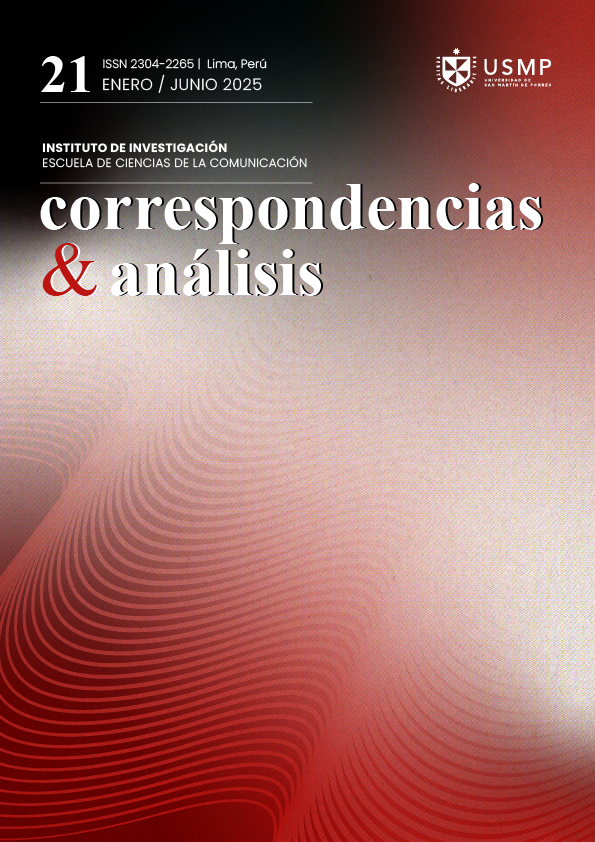






2.png)


